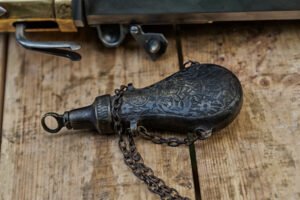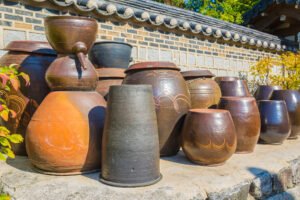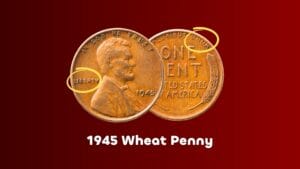If you want your liquor to age like fine wine, you must get a decanter! But gone are the days when the decanters were glass, with thick walls and low lead content! It’s all plastic now! And that’s why authentic vintage glass decanters are highly expensive today!
But, when you visit an antique shop, you’ll see many glass decanters ranging from $50-1000$. So, how can you get a real antique one? Well, I’m here to help. Today, we’ll check and identify classic antique glass decanters and their estimated cost!
Key Takeaways
- Old, authentic decanters have visible features like bubbles, pontil marks, faded walls, and hand-cut chisels on the surface.
- White, green, and yellow decanters are artificially pigmented. So, pick the basic, transparent models if you want a good value.
- Choose a bullseye or mushroom stopper if you want to use it for your drinks. Otherwise, even a rimless 1700s decanter is best!
- For high value, go with wide, cuboidal, and teardrop decanters. For a unique shape, pick grenade or twisted decanters!
Notable Features of Vintage Glass Decanters
Finding an antique glass flask is easy! Let’s start with the material! For this, strike your finger onto the decanter, and record the noise. If it’s clear ringing, then it’s glass. If it sounds stuck, it might be plastic or even acrylic.
Now let’s move to the visual inspection! Here are the features to look for:
- Hand-blown pontil marks and scars, just like an old glass medicine bottle
- Bubbled surfaces, leftover liquor marks, and faded walls
- 900 – 1000ml flasks with a 5-6 inch wall and 0.5 mm rim
- Elongated necks with matching seams, stoppers, and chiseled base
- Frosted, Tinted, Hammered, or Satin finishes with a 2 mm glass base
Evolution & History Of Glass Decanters’ History
You would be surprised to know that 1700s flasks fermented the wine themselves! That’s because they were wide and circulated air. But, it also had downsides, like exposure to dust and sun! Not to mention the thin, ill-fitting lids that spilled liquid. So, they needed rework!
It was in the 1800s that makers explored stoppers to reduce spillage. And to fit them well, they pulled the necks and reduced the diameter. So, if you see a large base, long neck decanter, you can price it from $500 – 1000.
The post-industrial revolution era was more commercial. Makers added flutes, rings, and spouts to make them more usable. They even reduced the glass thickness for more profits. But this peeled off all the carvings from the flask, making it common and cheap!
3 Types of Old Glass Decanters & Their Valuation
Did your antique shop bombard you with too many models? Well, don’t confuse yourself. Divide the models as per their types for a basic cost range. Here are three types of glass decanters, along with features!
1. Chiseled Decanters

Chiseled decanters look more like a cut glass cup! Round and sculpted at the base, they curve at the top and have a round lid. You’ll also notice that they look masculine and royal. And if they have some whiskey stains, price them for $200 – 300. If not, they cost $100 – 150.
2. Gin Decanter
As the name says, gin decanters are the ones for storing and serving gin. So, they are colorless but have a magnifying effect that helps see the drink. Plus, you get them with silver labels and lead-free glass, costing $800 – 1000.
3. Vodka Decanter
Vodka decanters are just like the luxury perfume bottles you see today. Like, they are slender, squarish, and have thick glass that cools the vodka. You’ll see fancy stoppers and hand-painted motifs with them. Plus, most have a silver rim, valuing $500 – 800.
7 Steps to Identify & Value Antique Glass Decanters
Now that you know your decanter type, let’s break it down as per the shape, brand, and seven more factors to identify and value!
1. Track the Manufacturing Date & Age

The older the glass decanter, the more precious it is! So, if you want rare, handmade pieces, what’s better than the 1700s models? But choose the 1800s ones if you want usable and branded decanters. And if you want it fancy and gold, the 1900s are best!
And don’t worry—you don’t need an expert here! I’ll tell you how to track your age yourself!
How Do You Identify Old Glass Decanters from the 1700s?
If your glass decanter looks like a wide, long-necked flask, it must be from the 1700s. You can even find flat bases, straight sides, and large bases with them. Most will be simpler, but you can get some with leaf or flower designs!
Besides, they won’t have any rims or seams! So, try to get decanters with their detached lids for a high value of $1000 – 1500. If not, you can price them for $800 – 900.
How Does an 1800s Glass Decanter Look?
The 1800s glass decanters were very usable. You’ll see some flutes, rings, and stoppers with these. You can also check their brands, logos, and other patent numbers to track them.
Many might even have seals to prevent the wine from leaking. So, if the seals are cork or jute, you can price your flask for $900 – 1000. If they’re rubber or silicone, the value goes down to $700 – 800.
How Do You Know If Your Decanter Is from the 1900s?
If you see fancy forms with gold and silver motifs, it’s from the 1900s! Such decanters are thin, with 1-2 mm glass and pressed designs. Plus, you even get them in bold colors like red, green, and pink!
So, if your decanter has a silver inlay, price it for $200 – 300. But if it’s gold, you can value it for $600! And if it’s plain glass, the returns might be less than $100 – 120.
Here are some glass decanter patent numbers to help you out!
| Year | Age | Patent Number | Old Decanter Type | Average Valuation |
| 1880s | 140 years | 80853 650-1 | Vodka Decanter | $500 – 700 |
| 1900s | 120 years | 80853 650-6 | Vodka Decanter | $400 – 500 |
| 1900s | 120 years | USD188353S | Gin Decanter | $600 – 700 |
Flash a torch onto the edges, and pick a bluish decanter for an old make.
2. Check the Shape

You might see the common chiseled and pitcher-shaped decanters in shops. But dig more, and get unique grenade or globe shapes to raise the value by 4 – 5%.
And, if you want it angular, go with twisted or square flasks for the best value. Apart from that, even square or cuboidal gin decanters are a wise pick!
Want to know how each shape affects the value of your glass decanter? Check out the table to know!
| Old Decanter’s Shape | Average Valuation |
| Wide, Cuboidal, or Flat | $600 – 700 |
| Circular or Tear Drop | $400 – 500 |
| Square, Box-like or Globe-like | $360 – 400 |
| Grenade | $200 – 250 |
| Twisted Decanters | $150 – 200 |
| Triangular or Geometric | $90 – 120 |
| Chiseled or Pitcher Shape | $70 – 80 |
Pick decanters with narrow rims and wide bases for a high value.
3. Observe the Glass Color
If you want old, authentic decanters, pick the ones that are transparent or bluish. You might even see gray or white models. But those have lead, and you won’t get more than $200 for these. Even tinted purple or pink decanters are a big no for good returns!
| Old Decanter’s Color | Average Valuation |
| Clear or Transparent | $300 – 400 |
| Blue, Aqua or Teal | $250 – 300 |
| Gray or White | $180 – 200 |
| Green, Yellow | $120 – 150 |
| Red, Pink | $200 – 250 |
| Purple | $100 – 120 |
| Multicolor | $50 – 80 |
4. Check the Brand Marks

If you want an eye-catching decanter, get the one branded by ‘Maeve Gillies’ or ‘Baccarat.’ These pieces are shiny due to their superior glass and colors. Plus, you might even get gold or diamond rims, raising the value by 10 – 15%.
But you can’t verify a piece just by its shine, right? So, look for logos and marks on the surface to check if a piece is branded. If not, you can check their trademarks on the lids to verify the brand.
Here are some antique glass decanter brands for help!
| Old Decanter Name | Manufacturer | Antique Decanter Type | Average Valuation |
| Highland Park Decanter | Maeve Gillies | Whiskey Decanter | $20,000 – 25,000 |
| Crystal Decanter | Baccarat | Whiskey Decanter | $190,000 |
| Diamond Sterling | Ley | Tequila Decanter | $3.5 million |
Check the bottle’s bottom rim and look for 12 – 14 diamond settings to verify the top brands.
5. Check the Glass
Did you see a grayish lining to your decanter’s edges? Well, it’s better you avoid them! Because these decanters might be of lead glass that could poison your drink! Instead, look for a greenish potash glass that raises the value to $200 – 300.
6. Analyze the Style
Decanters were not always locally made. So, each imported model brought a new set of designs with it! For example, European decanters looked more like glasses with thin flutes, amber glass, and ribs. So, they are small and cost as low as $150 – 200.
In contrast, the French decanters are ornate, with many birds and vines on the surface. So, they are more precious, costing about $300 – 500.
Avoid getting chipped or cracked decanters as they lower the value by 5 – 6%.
7. Check the Stopper Type

Antique decanters have two types of stoppers – bullseye and mushroom. The bullseye stopper looks like a circle on top, with three rims and a finger loop. But, these are handmade and cost more, at $200 – 250.
The later mushroom stoppers look like an umbrella on top. But, they are machine molded and cost less, at $100 – 120.
How Do You Clean an Antique Decanter?
Soak your antique decanters in warm water and rinse them with vinegar and dish soap. You can also use coarse salt and water to wash off any fungus and mold.
Do Old Glass Decanters Contain Lead?
Yes, vintage glass decanters might contain about 25 – 30% lead, especially if they are gray. So look for green or bluish glasses that have lower lead content.
How Do You Remove Cloudiness from an Old Glass Decanter?
Rub 2-3 drops of jelly on the inner edges of the decanter. Let it sit for 2-3 days, and wash off with salt water to remove all the whitish marks easily.
Identifying antique glass decanters is child’s play. You just have to look for thick glass, minimal designs, and a bluish tint! And if you want to value it properly, you always have our guide for help! So just observe the features, add the values next to them, and you are done!
And if you need more help valuing other glass items like ‘antique glass pitchers’ and ‘perfume bottles,’ look no further!









